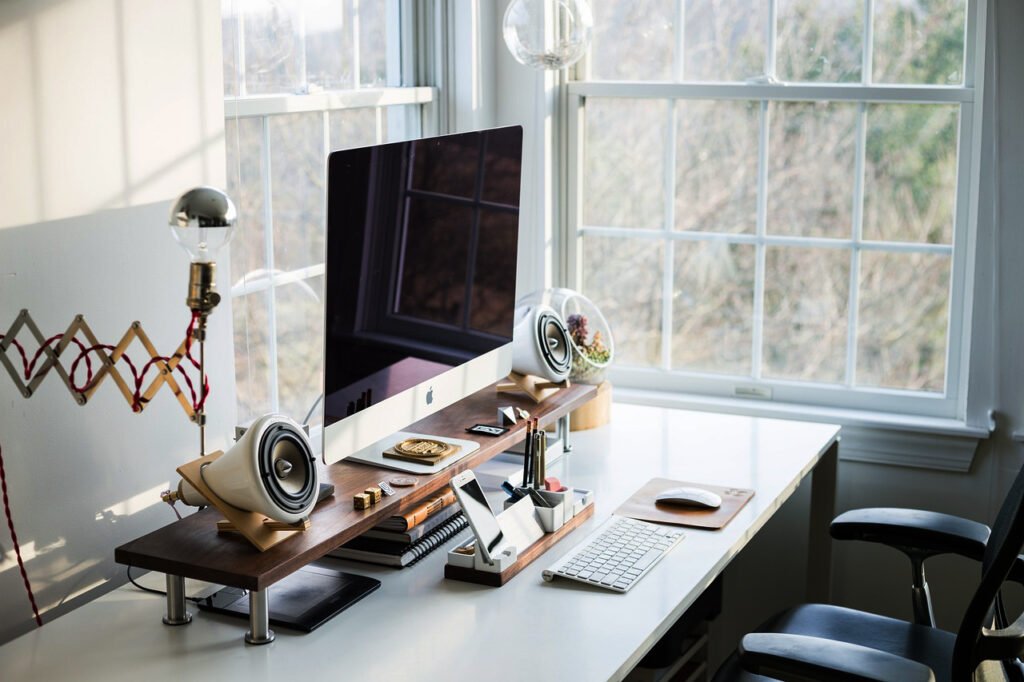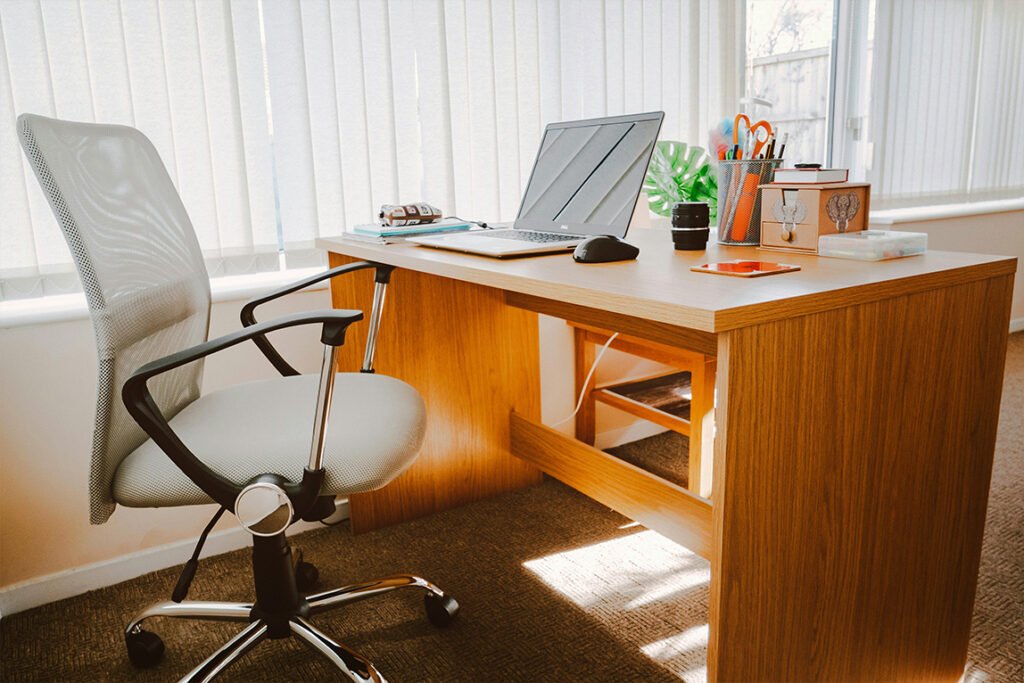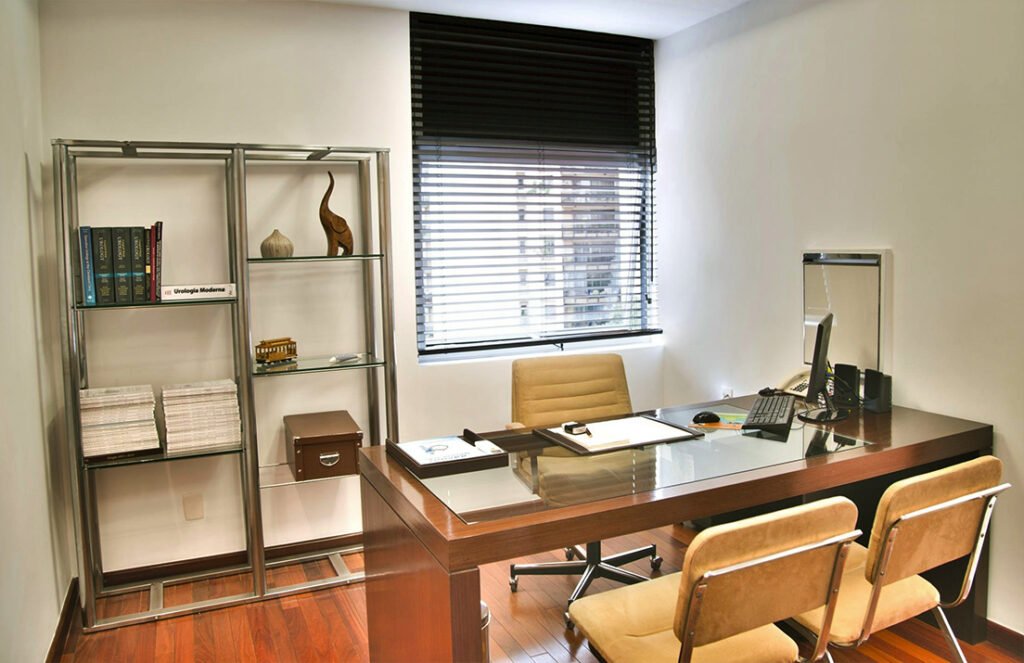“I got a job!” I told my mom, and she was so happy that her face lit up with excitement. I had been looking for a job and was struggling to get one. It had been one year since I resigned from my previous work, and it took me an entire year to find a new job. After hearing the news, my mom came running and hugged me. But when I told her that my office would be at home, she looked a bit puzzled. “Working from home? How does that even work?” It’s a concept that’s still new to many, but in today’s world, remote work has become the new norm. Even if you’re someone who’s used to working from an office, there’s always a chance you’ll need to tackle tasks from home. Plus, you’re spared from office politics. Having a dedicated workspace isn’t just a luxury now—it’s necessary. In this blog, we’ll explore how to create a home office that not only meets your practical needs but also nurtures your best work.
1. Choosing the Right Location
Choose the right location to set up your home office—a place where you believe you can perform at your best. A distraction-free or quiet environment fosters focus, creativity, and productivity. If you can, pick a space with a door—this simple boundary can hint to others (and to yourself) that this is your work zone, so no one will easily access and interrupt you. The location of your home office setup matters the most. If your work requires deep focus, you need to have a room away from high-traffic areas. If natural light boosts your mood and productivity, set up near a window. Your workspace should serve your unique work style.
2. Essential Equipment and Furniture
Once you’ve chosen your location, equip your home office with the essentials:
- Laptop or Desktop: A laptop has the advantage of portability and flexibility. It is great if you’re always on the move and have to travel to different places. You can take it anywhere. Desktops, on the other hand, are better suited if you know you have stationary work. They offer more potential for future upgrades, making them a good choice for those who require powerful computing capabilities. It’s not that you can’t upgrade a laptop, but it’s generally easier to do so with a desktop. The best choice for you ultimately depends on your work requirements.
- Ergonomic Chair: Working means you have to sit for long periods, and that can be tough on your body in the long run if you don’t get up often. Invest in a good chair that supports your back and encourages proper posture. Remember to take breaks and go for a walk, not just sit from 9 to 5. This is one area where splurging a bit can make a huge difference in your daily comfort and long-term health.
- Desk: According to your work needs, find a desk that can accommodate your laptop, documents, and any other tools you require. If you have many items or tools, consider a larger desk. Some people prefer standing while working; you can opt for that too—there are excellent desk converters that can be used for both sitting and standing.
- Keyboard and Mouse: You click and type all day, which is how your work gets done. Choose these items with long-term use in mind.
- Lighting: I prefer natural light and think it’s the best option. I don’t turn on any lights until 4 p.m., but if that’s not an option, a good desk lamp with adjustable brightness can reduce eye strain and help you stay focused.
- Notebooks and Stationery: Pens, pencils, and notebooks—if you think you don’t need them, you do. Even where everything can be done on computers or phones, there’s something powerful about jotting down notes or sketching ideas on paper. Keep a notebook and some pens handy—they’re great for organizing thoughts and staying on top of tasks.
- Headphones: If your work involves communication or if you need to block out noise, invest in quality noise-canceling headphones with a reliable mic.

3. Creating a Productive Environment
Your home office should be more than just a place where you complete tasks; it should be a space that inspires you to do your best work. Here’s how to create an environment that promotes productivity:
- Personalization: Your space should be inspiring. Personalize it with items that motivate you. You can keep it minimalistic; if you’re a designer, you can keep it artsy. Place pieces of art, a plant, or motivational posters—items that serve as reminders of your goals and keep you motivated.
- Minimize Distractions: Distractions are the enemy of productivity. Position your desk to face away from distractions like the TV or busy household areas. Use noise-canceling headphones if noise is an issue. Avoid keeping your phone near you if you’re working on something important.
- Organization: I believe your mind will be clearer if you work in an organized workspace. Sometimes, we don’t realize how many things we accumulate on our desks and forget to declutter. Only keep your essentials and remember to declutter your desk regularly.
4. The Mindset of Working from Home
Working from home requires a level of self-discipline and motivation that can be challenging to maintain without the structure of an office setting. You might feel lazy and end up scrolling through your phone, wasting your day. Here are some strategies to help you cultivate the right mindset:
- Routine and Structure: Start your day at the same time each morning, and create a clear start and end to your workday. This signals your brain that it’s time to work and helps you associate your home office with productivity, not relaxation.
- Set Boundaries: It’s easy to blur the lines between work and personal time when you work from home. You might feel overwhelmed or burnt out later. Separate your work life from your personal life to maintain a healthy balance.
- Create Little Routines: You could start your workday with tea or coffee at your desk to signal your mind that it’s time to work. When you’re done, taking a short walk or updating yourself on social media can help you mentally leave work behind and relax.

Adapting and Evolving Your Space
Your home office shouldn’t stay the same forever. As your work habits or needs change, your workspace should evolve too. If something isn’t working, fix it! Move things around, get new equipment, or even find a new spot to work. A neat space might help you focus, but a bit of mess might spark creativity. Find what works best for you. Think about your style. What setup personifies you? If someone sees your workstation, would they be able to say that it’s your workspace?

